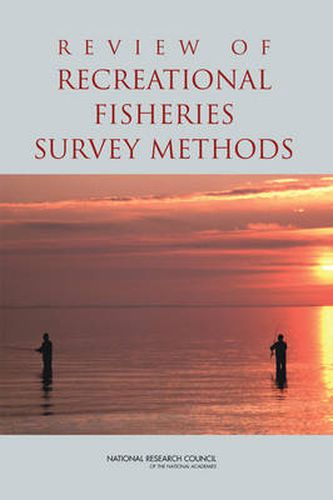Readings Newsletter
Become a Readings Member to make your shopping experience even easier.
Sign in or sign up for free!
You’re not far away from qualifying for FREE standard shipping within Australia
You’ve qualified for FREE standard shipping within Australia
The cart is loading…






Recreational fishing in the United States is an important social and economic component of many marine fisheries, with an estimated 14 million anglers making almost 82 million fishing trips in 2004. Although each individual angler typically harvests a small number of fish, collectively these sport fisheries can take a significant fraction of the yearly catch - in some cases more than commercial fisheries. For example, in 1999, recreational fishing accounted for 94 per cent of the total catch of spotted sea trout, 76 per cent of striped bass and sheephead, and 60 percent of king mackerel. It is important that systems used to monitor fishing catch are adequate for timely management of recreational fisheries. However, the large number of anglers and access points makes monitoring recreational fishing much more difficult than monitoring commercial fishing. This report reviews the types of survey methods used to estimate catch in recreational fisheries, including state/federal cooperative programs. The report finds that both telephone survey and onsite access components of the current monitoring systems have serious flaws in design or implementation. There are also several areas of miscommunication and mismatched criteria among designers of surveys, data collectors, and recreational fisheries. The report recommends that a comprehensive, universal sampling frame with national coverage should be established, and that improvements should be made in statistical analysis of the data collected and in the ways the data are communicated. A permanent and independent research group should be established and funded to evaluate the statistical design and adequacy of recreational fishery surveys and to guide necessary modifications or new initiatives.
$9.00 standard shipping within Australia
FREE standard shipping within Australia for orders over $100.00
Express & International shipping calculated at checkout
Recreational fishing in the United States is an important social and economic component of many marine fisheries, with an estimated 14 million anglers making almost 82 million fishing trips in 2004. Although each individual angler typically harvests a small number of fish, collectively these sport fisheries can take a significant fraction of the yearly catch - in some cases more than commercial fisheries. For example, in 1999, recreational fishing accounted for 94 per cent of the total catch of spotted sea trout, 76 per cent of striped bass and sheephead, and 60 percent of king mackerel. It is important that systems used to monitor fishing catch are adequate for timely management of recreational fisheries. However, the large number of anglers and access points makes monitoring recreational fishing much more difficult than monitoring commercial fishing. This report reviews the types of survey methods used to estimate catch in recreational fisheries, including state/federal cooperative programs. The report finds that both telephone survey and onsite access components of the current monitoring systems have serious flaws in design or implementation. There are also several areas of miscommunication and mismatched criteria among designers of surveys, data collectors, and recreational fisheries. The report recommends that a comprehensive, universal sampling frame with national coverage should be established, and that improvements should be made in statistical analysis of the data collected and in the ways the data are communicated. A permanent and independent research group should be established and funded to evaluate the statistical design and adequacy of recreational fishery surveys and to guide necessary modifications or new initiatives.